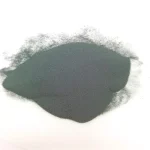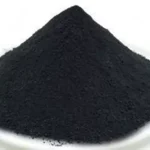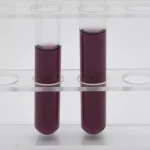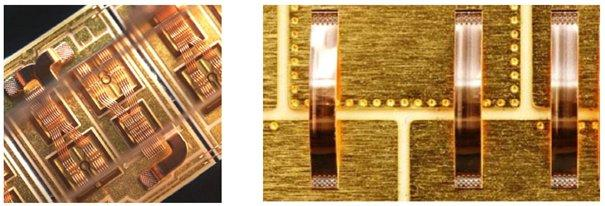Anodes for lithium batteries
Materials that store and release Lithium ions are an essential part of the lithium battery. The anode material is responsible for the acceptance of lithium ions by the positive electrode in the lithium battery construction. It also releases lithium ions into the positive electrode when the battery is discharged. The anode material chosen directly impacts the cost, performance and safety of lithium batteries.
The characteristics of anode material for lithium battery:
Reversible capability: Reversible capacities refers the amount of lithium that the battery is able to store and release when charging and discharging. The higher the capacity of the battery and the more energy it can store and release, the higher its reversible capability.
Lithium-ion diffusion coefficent: This coefficient measures the difficulty of diffusion of lithium ions in anode materials. The higher the diffusion coefficient the better is the electrochemical performance.
Electrochemical stability: The ability of anode materials to stabilize their structure and reactivity while the battery is charging or discharging. When the anode material’s electrochemical stabilty is poor, battery performance will be affected, as well as its life span and safety.
Cost: Considering the commercial application, the price of anode materials is also an important factor to be considered.Currently, lithium battery anode materials on the market mainly include graphite-based materials,
Lithium titanate and tin based materials are both good options. One of them is graphite-based material, which has high reversible capacities and good stability electrochemically, but costs a lot. Although lithium titanate has good electrochemical stability, it is expensive. Its reversible ability is also low. Tin-based material has a high capacity for reversibility and is low in cost. However, their electrochemical stabilty is poor. Different anode material is suitable for various applications and battery systems. It must be chosen and used according the actual needs.
Research and development in battery materials is important because of their important role in lithium batteries. With the continued progress of technology, and the growing application demand, research and development for new anode material will become more active in the future. New negative electrodes are mainly made of transition metal nitride or carbide, as well as alloy-like material, carbon nanotubes, two-dimensional materials and carbon nanotubes. These new materials will lead to the development of future lithium batteries anodes due to their higher reversible capacitance, improved electrochemical stability, and lower cost.
Use of lithium anode materials
Applications of anode material are wide-ranging, and include a number of fields requiring portable power sources such as electronic devices, electric vehicles, energy storage systems, and so on. Following are some specific examples of application:
Electronic products, such as mobile phones, tablet PCs and laptops. Power is provided by lithium batteries. The anode material used directly affects energy density and charging speed as well as the life, safety, and longevity of the batteries in these areas.
Electric Vehicles – Electric vehicles use a high amount of energy to power the vehicle. Therefore, they must have high-capacity batteries. The anode material chosen is crucial to the safety and performance of electric vehicles.
Electricity Storage Systems. These include home energy systems, wind power storage systems and more. These systems are required to produce a large amount power during periods of peak demand, which is why they need large-capacity batteries with high energy-density. The anode material used directly impacts the performance and price of these systems.
What are the different types of anode materials for lithium batteries?
A new type of lithium batteries, silicon-carbon batteries have anodes that are primarily silicon-based. Silicon-based material has a high reversible capacitance, high electrochemical stabilty and low cost. They have many applications in the field of batteries. There are three main types of silicon materials used as anode material in silicon-carbon battery:
Silicon-carbon materials: Silicon-carbon materials are a composite material that combines silicon-based materials with carbon-based substances. This material offers high reversible capacitance, high electrochemical stabilities and long lives, and can be better matched to the anode for improved battery performance. Silicon content in silicon carbon composites is adjustable to meet the needs of different applications.
Material made of silicon oxide: Silicon dioxide material is an excellent negative electrode with high electrochemical performance. It has a good cycle life, long life, and a good safety performance. The main drawback of this material, however, is the low efficiency in first charging and discharging. To improve performance it is necessary to use pre-lithiation techniques and other technologies.
Silicon nitride Material: silicon nitride, a new material for negative electrodes that combines both the benefits of silicon-based and nitride materials. This material is highly reversible, has high electrochemical resistance and excellent electrical conductivity. Therefore, it has good prospects for use in batteries.
Here are a few examples of new battery materials.
Carbon nanotubes. These nanotubes have many advantages, including high electrical conductivity and chemical stability. Carbon nanotubes have a wide range of applications, including as anode material in lithium-ion cells with reversible high capacity, stable charging/discharging, and long life.
Graphene : Graphene can be used as anode material in lithium-ion batteries with high reversible capacity, stable charge/discharge and long life. Graphene has good applications as anode materials in lithium-ion cells with high reversible capacities, stable charge/discharge and long lives.
Alloy materials. Alloys are a type of new anode materials with high reversible capacitance, stable charging/discharging and long-life. The disadvantage of alloys is their high cost and difficult preparation.
Metal oxide material: metal oxide is a new anode material with many advantages, including high reversible capacitance, stability of charge/discharge over time, long-term durability, excellent multiplicity performance, and low temperature performance. Metal oxide materials’ disadvantages are their higher preparation costs and lower conductivity.
The following materials can be used as anodes for batteries:
Tin-based Materials: Tin-based materials are a common anode material with advantages such as high reversible capacities, good electrochemical stabilities and low costs. Tin-based material disadvantages include a short cycle life and the easy formation of dendrites. These factors reduce battery safety.
Oxygenate materials: Oxygenate materials are a new type anode with advantages such as high reversible capacities, stable charging/discharging, long lifespan, and low costs. The oxygenate material’s disadvantage is its poor kinetic performance for electrochemical reactions. This needs to improve.
Transition metal-nitride materials: transition metal-nitride is a new material for negative electrodes. It has the advantage of high reversible capacities, stable charging, discharging and long life. Also, it performs better in electrochemical reaction kinetics. The preparation costs of transition metal material nitride are high and need to be further reduced.
Alloy materials. These materials include Si-C Composites, SnC Composites, etc. These materials offer a higher reversible capacitance and better charge/discharge stabilities, but their cost is high and they need to be further reduced.
The research, development, and application of battery anode material is important for improving the performance of batteries, reducing their cost, and ensuring their safety. New battery anode material application will become more diverse with the continued progress of science, technology and application demand.
Suppliers of Lithium Battery Electrode MaterialHigh-purity ultrafine gemstones can be supplied by us.
__S.66__
Such as graphite or graphene. Click on the desired product or email us to send an enquiry.







